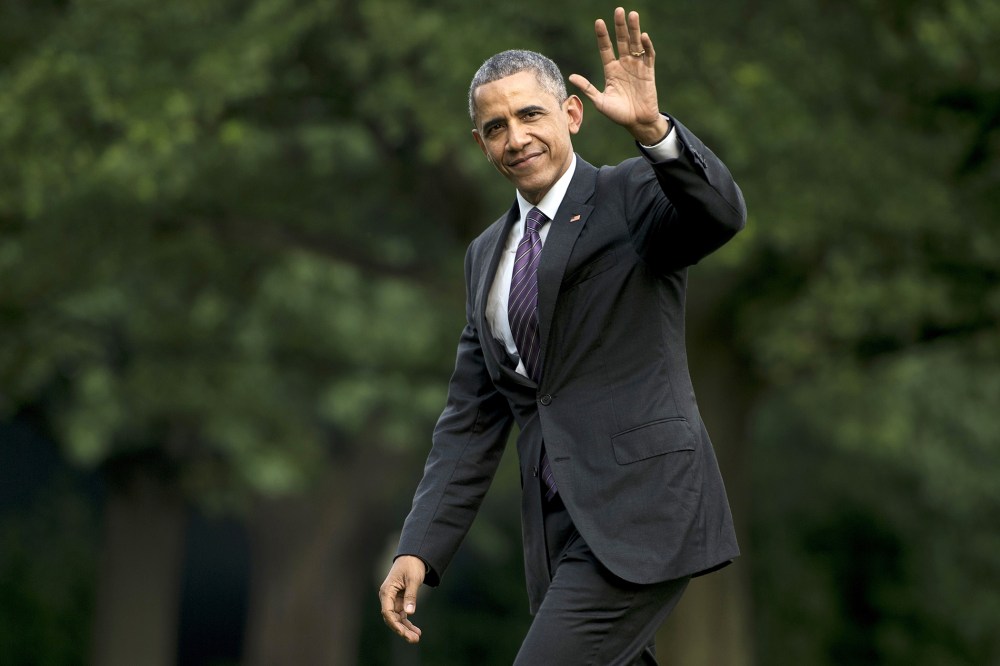President Obama has commuted the sentences of more federal prisoners than the past four presidents combined. In fact, in just one day, Obama doubled his own record. He had, until this week, commuted the sentences of 43 Americans.
On Monday, he informed 46 more – some of whom were serving life sentences for drugs – that they could go home.
But that is not what was remarkable about Monday’s act of clemency. What was new, and far more significant for the exercise of this unique presidential authority, was how Obama did it.
This was no Friday afternoon press release, no midnight move and sparked no national trauma. Instead of hoping that no one would notice, the 44th president the United States did what no modern predecessor has done – he made sure that everyone knew about his decision, why he made it and what he hoped it would accomplish.
RELATED: Amid calls for justice reform, Obama signs wave of commutations
In a video published on the White House website and on all of its social media accounts, Obama was explicit about why “second chances” matter in American life. He cited costs, sentencing reform, the individuals themselves, and the national spirit. The United States “spends over $80 Billion a year incarcerating people often times who have only been engaged in nonviolent drug offenses,” he said. And, Obama added, “We are at a moment when some good people in both parties, Republicans and Democrats, and folks all across the country, are coming together around ideas to make the system work smarter, work better, and I am determined to do my part wherever I can.”
The 46 men and women who will be freed from federal prisons across the country were not “hardened criminals,” and their overly long sentences were “punishments [that] didn’t fit the crime.” The majority of those deemed worthy of presidential mercy were sentenced to at least 20 years. Fourteen of them are serving life sentences. Not for violence, but for drugs.
Obama’s decision to speak publicly, and compassionately, about clemency marks a significant break from the darker portrait that has stained clemency for decades.
The power, fallen into disuse by nervous presidents, and long mistrusted by the public, was badly bruised when President Gerald Ford pardoned President Richard Nixon in 1974. He explained his decision to a confused and angry public, many of whom never forgave him.
Pardons were never the same and over the years, they seemed to signal favor. George H. W. Bush pardoned participants in the Iran-Contra scandal; President Bill Clinton pardoned a relative and a campaign donor.
In 2011 and 2012, I published data and a series of stories showing that white applicants were nearly four times as likely to be awarded pardons than all minority applicants combined. African-American applicants had virtually no chance at all.
RELATED: 600 US churches call for an end to the ‘war on drugs’
During the eight-year presidency of George W. Bush, 189 people were pardoned, just eight of whom were black. Every person who had been sentenced for a drug crime, and pardoned by Bush, was white.
The series led to the removal of the pardon attorney inside the Justice Department and a reform of the system which opened the door to Monday’s commutations and many more.
Among the first to be released by Obama from a triple life sentence was Clarence Aaron. The pardons office had withheld information about his case from the White House and an internal report later determined that the pardon attorney had lied to the president to keep Aaron behind bars longer.
A star football player at a historically black college, Aaron was imprisoned at the age of 24 for a minor role in a drug conspiracy. He was not the buyer, the seller or the user. But he introduced two friends to one another who became principal players in a cocaine sale at the height of the drug war.
In January 2014, after 21 years in prison, Aaron was released, first to a halfway house and then, in April he went home to Mobile, Alabama.











